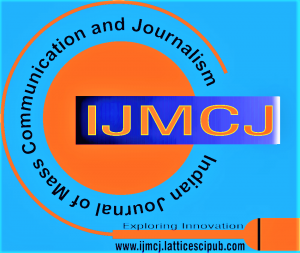Analysis of Single-Shot and Long-Take Filmmaking: Its Evolution, Technique, Mise-en-scène, and Impact on the Viewer
Abhijit Ghosh
Abhijit Ghosh, Assistant Professor, Department of BFA in Digital Filmmaking & VFX, Techno India University, West Bengal, India.
Manuscript received on 01 October 2022 | Revised Manuscript received on 11 October 2022 | Manuscript Accepted on 15 December 2022 | Manuscript published on 30 December 2022 | PP: 4-12 | Volume-2 Issue-2, December 2022. | Retrieval Number: 100.1/ijmcj.B1023122222 | DOI:10.54105/ijmcj.B1023.122222
Open Access | Ethics and Policies | Cite | Mendeley | Indexing and Abstracting
© The Authors. Published by Lattice Science Publication (LSP). This is an open-access article under the CC-BY-NC-ND license (http://creativecommons.org/licenses/by-nc-nd/4.0/)
Abstract: The most of the narrative films feature extremely deliberate movie editing. The tale is advanced and viewers are given a feeling of time through cuts between shots. Cutaway shots provide background, and quick cuts that take place in only a fraction of a second, give the project vitality. A longer take, on the other hand, can occasionally be used to tell the story and transmit a lot of information at once, making it a crucial cinematography technique. Long-takes used to be constrained by the amount of physical film that could fit inside a camera. However, since everything is now done digitally, we can shoot as much as our multi-gigabyte storage card desires. There are several movie scenes that employ this long-take technique, but much fewer movies attempt to shoot the entire thing in a single take, and these films should be commended for taking the risk, even if they had various degrees of success. A single-shot or a long-take movie gives the illusion that time and space are continuous, just like in real life. So, as long as the filmmakers feel the need to be innovative and try to achieve something that is more difficult and fascinating for their films, innovation will remain crucial in the film industry. The one-shot technique is a rare example of a creative, innovative, and difficult technique. Using case studies, news reports and literature reviews, this study carefully observes that because the camera moves through and rewrites space in a single-shot movie, this filmmaking technique significantly contributes to the development of its mise-en-scène. It examines the effects that a single-shot or a long-take movie creates among the audience and the technical manoeuvres that define the success of it.
Keywords: Long-Take, Single-Shot, Filmmaking, Cinematography, Mise-en-scène, Film Narrative
Scope of the Article: Film
